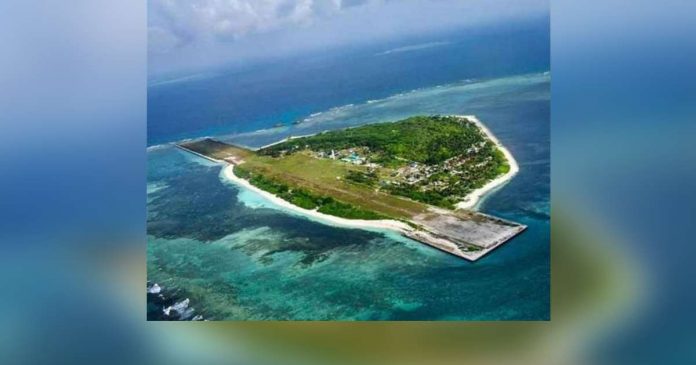
MANILA — The Armed Forces of the Philippines said ferry services are now available twice a month for residents of Pag-asa (Thitu) Island, one of the remotest areas under Filipino control in the West Philippine Sea (WPS), for a more regular delivery of supplies to its civilian population and military personnel.
The AFP Western Command said that on July 5, the World War II-era BRP Mangyan (AC 71) of the Philippine Navy left Tidepole Pier in Puerto Princesa City, Palawan, for a passenger service and logistics mission to Pag-asa, a 445-kilometer journey that usually takes to two to three days.
It was the second trip since the twice-a-month ferry service was launched on June 21, the AFP said in a statement on Friday.
The BRP Mangyan had 12 passengers — six soldiers and six civilians, the latter including merchants with business dealings in the Palawan mainland — and a 10-ton cargo of food, fuel, and other provisions.
A total of 34 civilians from Pag-asa joined the Navy vessel’s crew on the return trip to Puerto Princesa.
Not as regular
According to the Wescom spokesperson, Commander Ariel Coloma, the military has long been arranging ferry services for civilians to and from Pag-asa, but not on a regular basis. Past trips would only be scheduled whenever the Navy was conducting patrols in the Kalayaan Island Group.
“Civilians vessels plying the [Puerto Princesa-Pag-asa] route are really rare. That’s why our Wescom commander Vice Adm. Alberto Carlos ordered a dedicated regular schedule for ferry services to help in the supply and transportation requirements of Pag-asa residents,” he told the Inquirer on Saturday. “The regular ferry service acts as a vital lifeline for the residents of Pag-asa Island, providing them with the necessary resources to sustain their livelihood and maintain a functioning community,” Wescom said.
“This arrangement not only reinforces the logistical support to the island but also strengthens the bond between the military and civilian population in the remote outpost.”
Coloma said the number of passengers and volume of cargo load would depend on the available Navy ships in the Wescom area. The 560-ton BRP Mangyan, for example, could only accommodate up to 40 passengers.
The AFP is planning to use other, larger ships, such as BRP Laguna (LS-501) and BRP Benguet (LS-507), to accommodate more passengers and cargo, possibly including vehicles.
Show of commitment
Pag-asa is the second-largest naturally occurring feature in the Spratlys Group of Islands, next to the Taiwanese-occupied Itu Aba, and the only one with civilian inhabitants. It has been occupied by Filipinos since 1971.
Currently with 400 permanent residents and a functioning barangay government under the municipality of Kalayaan, Palawan, the island has an airfield and a naval base.
For the AFP, having a regular ferry service not only improves the life of the villagers but sends a message asserting Philippine sovereignty in the WPS amid recurring tensions with China.
“As tensions heighten in the region due to the increasing presence of Chinese maritime militia vessels (CMMVs) and maritime law enforcement assets, the regular ferry service illuminates the Philippines’ commitment to asserting its sovereignty and ensuring the well-being of its citizens in the area,” it said.
Growing swarm
In March, the Philippine Coast Guard spotted up to 42 CMMVs, which were guarded by a People’s Liberation Army-Navy ship and a Chinese Coast Guard (CCG) vessel, just 7 kilometers off Pag-asa. The number dropped to 15 a month later, but maritime experts said that they had just turned off their automatic identification system to be invisible, or moored at a nearby feature in the WPS.
In a Twitter post on Friday, retired US Air Force Col. Raymond Powell reported the presence of CCG vessel 5501, also known as Zhong Guo Hai Jing 3901, as it joined another CCG vessel with bow No. 4203.
Powell also noted the “still growing” swarm of 32 CMMVs in the waters near Panganiban (Mischief) Reef and Ayungin (Second Thomas) Shoal, which are within the country’s 370-km exclusive economic zone. (Dexter Cabalza © Philippine Daily Inquirer)



